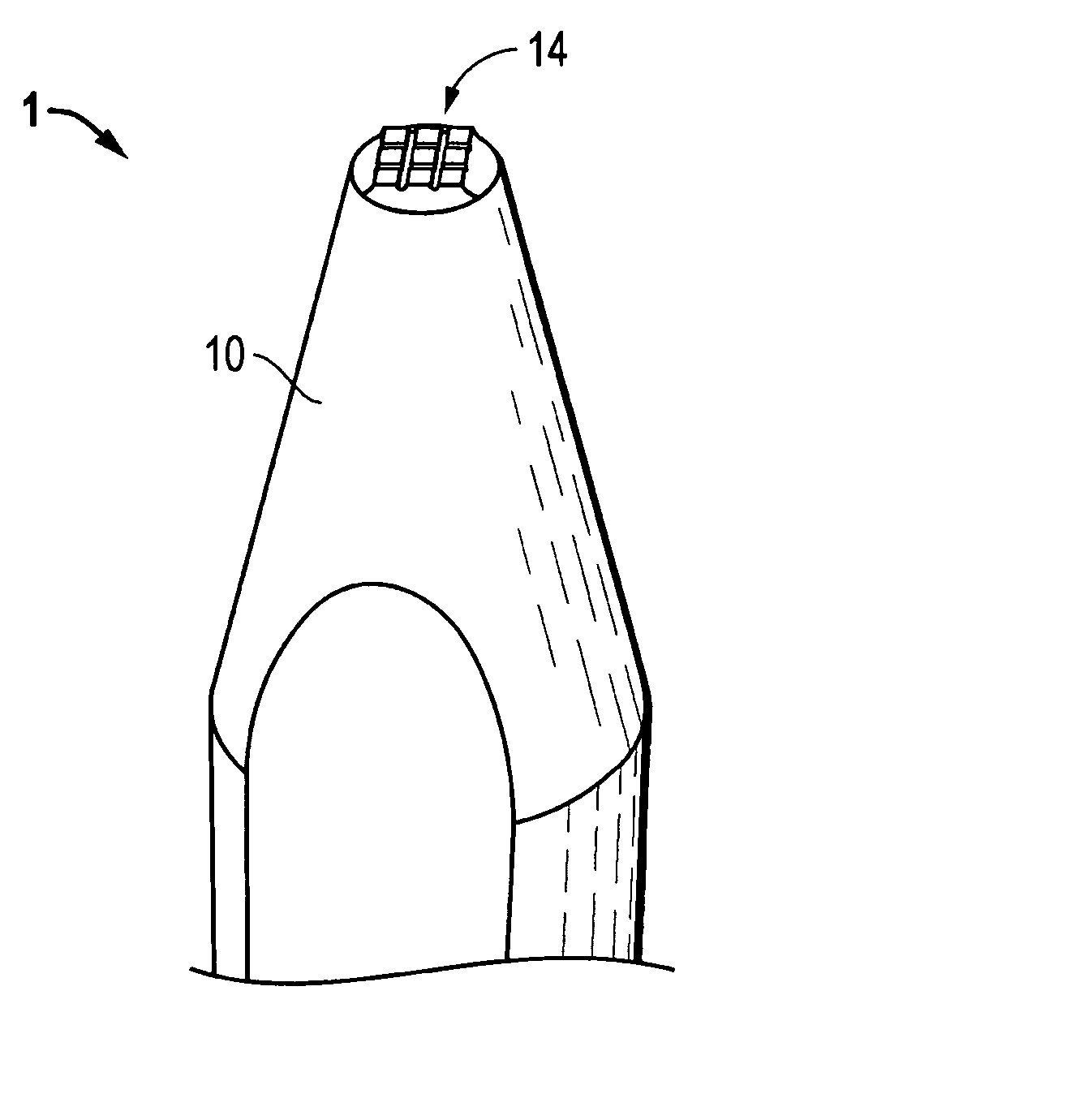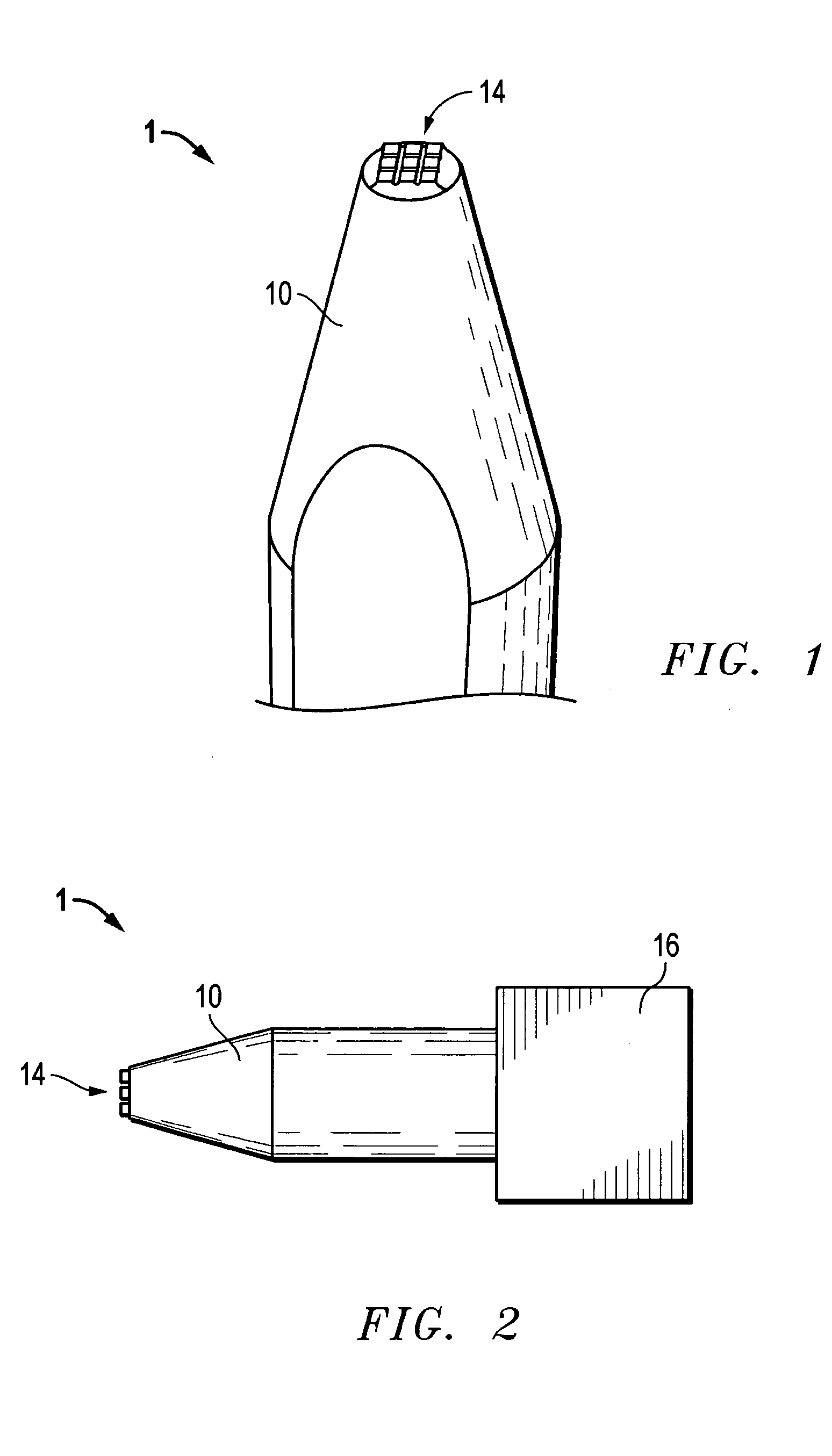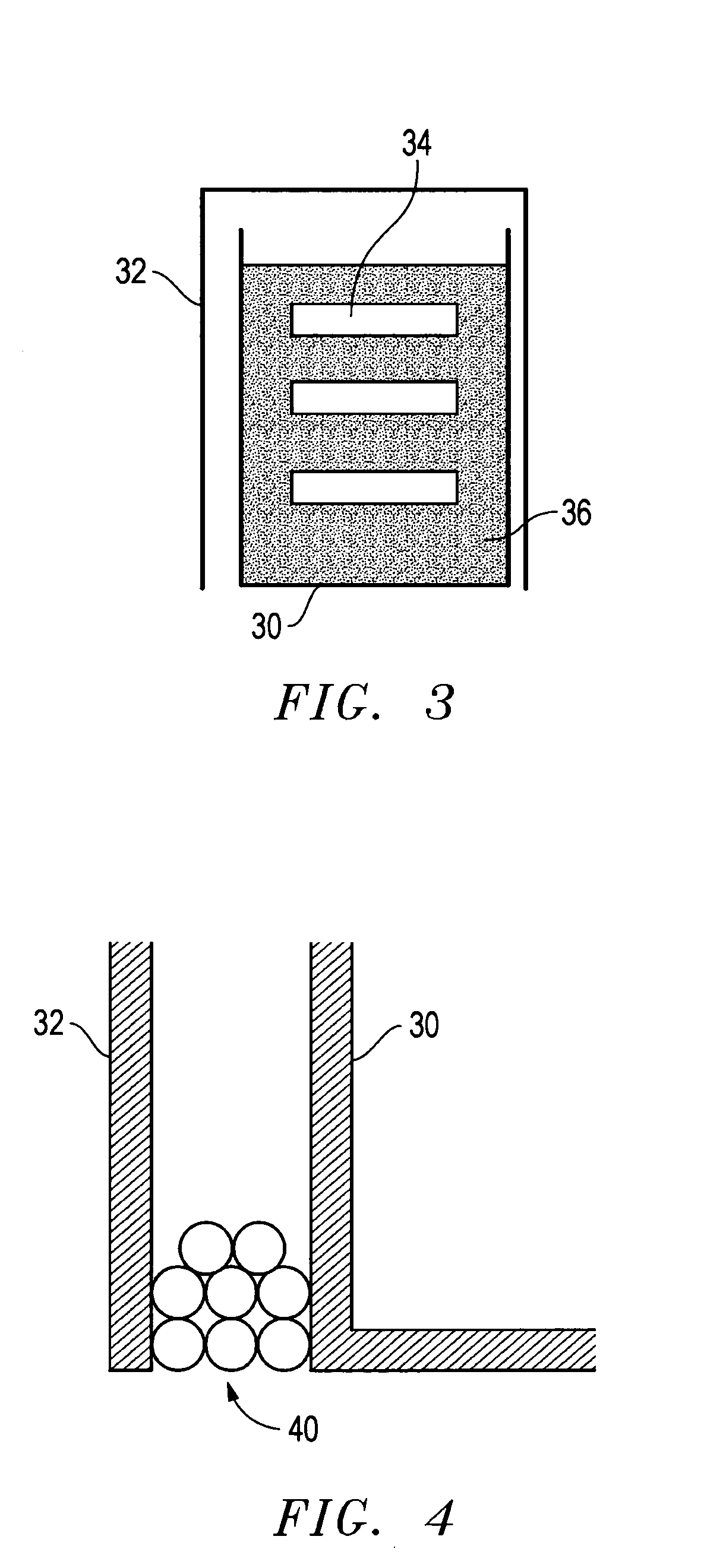Zirconia toughened alumina ESD safe ceramic composition, component, and methods for making same
a technology of esd ceramics and zirconia, applied in the direction of non-electric welding apparatus, conductive materials, metal-working apparatus, etc., can solve the problems of not being particularly suitable for esd safe applications, zirconia based ceramics, including zirconia based esd ceramics, may not have suitable thermal conductivity and thermal expansion properties, and lack of rigidity, stiffness, wear resistance and abrasion resistance for certain demanding tool applications
- Summary
- Abstract
- Description
- Claims
- Application Information
AI Technical Summary
Benefits of technology
Problems solved by technology
Method used
Image
Examples
example 1
[0038] AZ67 powder, a ZTA (zirconia toughened alumina) with 20 vol. % Y-TZP and 80 vol.% Al2O3, available from Saint-Gobain Ceramics & Plastics in Colorado Springs, Colo., is mixed with submicron Fe2O3 in a jar mill. The mill is charged with Y-TZP milling media, deionized water, and dispersant. The milling was performed for 10 hours in order to assure a homogeneous mixing. The mixed slurry from the milling was dried using a Roto-Vap or spray dryer. It was found that a magnetic stirrer must be avoided in order to eliminate any segregation of slightly magnetic particles such as Fe2O3. The dried granules were pressed into disks or square tiles using steel molds followed by a CIPing (cold isostatic pressing) at 207 MPa (30,000 psi). These pressed parts of 55% relative density (“or green compacts”) were sintered at 1,200 to 1,400° C. for 1 hour in air using a furnace with moly-disilicide (MoSi2) heating elements to achieve a sintered density of >95% T.D. (theoretical density), as summari...
example 2
[0043] AZ93 powder, a ZTA (zirconia toughened alumina) with 40 vol. % Y-TZP and 60 vol. % Al2O3, available from Saint-Gobain Ceramics & Plastics in Colorado Springs, Colo., is mixed with submicron Fe2O3 in a jar mill. The rest of processing method is same as Example 1. The results indicate that the ESD safe ZTA based ceramics an also be prepared with AZ93 powder.
TABLE 1Densification and Resistivities of ZTA based ESD dissipativeceramics before and after heat treatmentSinteredHIPedHeatSurfaceSinteringSinteredsurfaceHIPedHIPedsurfaceTreatmentResistanceZTAFe2O3tempdensityresistancetempdensityresistancein airafter HTtype(vol %)(° C. / Hr)(% TD)(Ohm)1(° C.)(% TD)(Ohm)1(° C. / Hr)(Ohm)11AZ6718.61200 / 1 86*2AZ6718.61250 / 1 99.61.52E1112001006.04E93AZ6723.31250 / 1997.28E1012001003.45E74AZ6723.31400 / 1961.3E5 135096.52.51E4700 / 2 6.94E45AZ6728.41250 / 1991.77E6 12001006.50E3850 / 121.40E66AZ6728.41300 / 1984.23E5 850 / 302.29E77AZ9321.251250 / 1 98.91.19E11120099.7 1.80E108AZ9321.251400 / 1979.3E4 135097.31....
example 3
[0053] A ZTA (AZ93 available from Saint-Gobain Ceramics & Plastics in Colorado Springs, Colo., 40 vol % Y-TZP, 60 vol % Al2O3) was mixed with milled Fe2O3 powder (milled to a specific surface area of 13 m2 / g, Alpha Aesar of Ward Hill, Mass.) in water by milling with zirconia (Y-TZP) milling media, followed by spray drying. The spray-dried powder was pressed into rectangular tiles using a steel mold followed by CIPing at 207 MPa to a green density ˜55% T.D.
[0054] The CIPed tiles was sintered at 1250° C. for 1 hr in air to a sintered density of ˜98% T.D. The color of sintered tiles was red. The tiles were not attracted to a permanent magnet. The resistivity of material by the DC resistivity measurement was ˜5×107 Ω-cm, which is good for the ESD dissipation.
[0055] Sintered samples were HIPed in nested alumina crucibles filled with zirconia (Y-TZP) bubbles and with an oxygen-generating oxide powder (Pr6O11, MnO2, or CoO) bed on bottom. Some samples were HIPed without the oxygen-genera...
PUM
| Property | Measurement | Unit |
|---|---|---|
| Young's Modulus | aaaaa | aaaaa |
| grain size | aaaaa | aaaaa |
| temperature | aaaaa | aaaaa |
Abstract
Description
Claims
Application Information
 Login to View More
Login to View More - R&D
- Intellectual Property
- Life Sciences
- Materials
- Tech Scout
- Unparalleled Data Quality
- Higher Quality Content
- 60% Fewer Hallucinations
Browse by: Latest US Patents, China's latest patents, Technical Efficacy Thesaurus, Application Domain, Technology Topic, Popular Technical Reports.
© 2025 PatSnap. All rights reserved.Legal|Privacy policy|Modern Slavery Act Transparency Statement|Sitemap|About US| Contact US: help@patsnap.com



